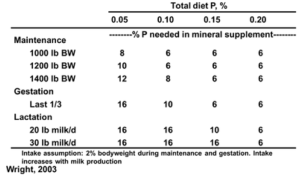Objective: The objective of our experiment was to determine if prescribed fire applied in April, August, or October influenced stocker growth performance or plant community characteristics in the Kansas Flint Hills over a 6-year period. Continue reading “Long-Term Effects of April, August, or October Prescribed Fire on Yearling Stocker Cattle Performance and Native Rangeland Plant Composition in the Kansas Flint Hills”
Category: March 2024
K-State Hosts 30-hour OSHA Course for Agriculture Workers
Agriculture is a high-risk industry, where “near misses”, accidents and even fatalities unfortunately occur. Many agriculture employers believe they are exempt from OSHA regulations and standards. However, agriculture falls within the scope of OSHA per the “General Duty Clause” (Section 5.a.1., OSHA 1910) which states that “Each employer shall furnish to each of his/her employees employment and place of employment which are free from recognized hazards that are causing or are likely to cause death or serious physical harm to his/her employees”. K-State will be hosting an OSHA-30-hour course for agriculture workers this spring in Garden City, KS. I would highly encourage anyone who is not familiar with OSHA and your role and responsibilities as an employer or supervisor to take an OSHA course.
For more information, contact Justin Waggoner at jwaggon@ksu.edu
Reducing Tick Populations Through Prescribed Burning
Objective: Explore the effect of prescribed fire on tick population dynamics in the Kansas Flint Hills. Continue reading “Reducing Tick Populations Through Prescribed Burning”
A Novel Approach of Using Electrostatic Field to Reduce Thawing Time and Improve Frozen Beef Quality
Objective: The objective of this study was to evaluate the impact of applying an electrostatic field (EF) on thawing characteristics, such as thawing speed and purge loss, as well as its impact on quality attributes during subsequent aging and retail display of beef. Continue reading “A Novel Approach of Using Electrostatic Field to Reduce Thawing Time and Improve Frozen Beef Quality”
GreatO+ Supplementation Leads to Greater Proportions of Omega-3 Fatty Acids in the Small Intestines of Holstein Steers
Objective: This study aimed to determine if supplementation of GreatO+, an extruded blend of flaxseed and microalgae (NBO3, Manhattan, KS), in Holstein steers would lead to greater amounts of fatty acids, particularly omega-3s, in the small intestines. Continue reading “GreatO+ Supplementation Leads to Greater Proportions of Omega-3 Fatty Acids in the Small Intestines of Holstein Steers”
Practice Good Habits to Ensure Safety When Handling Liquid Nitrogen Tanks
Sandy Johnson, extension beef specialist, Colby
Breeding season is still a ways off but those that use artificial insemination (that’s AI in my world) may be busy delivering or picking up semen stored in a liquid nitrogen tank. Unfortunately, many of the people involved with moving these tanks may be unaware of the safety precautions they should be taking when doing so. Understanding more about liquid nitrogen and its properties will reduce complacency and help prevent accidents. Continue reading “Practice Good Habits to Ensure Safety When Handling Liquid Nitrogen Tanks”
Managing Feeder Cattle Price Risk
By Jennifer Ifft, agricultural policy extension specialist, Flinchbaugh Agricultural Policy Chair
For producers that will have calves to sell in fall 2024 or early 2025, futures prices have rallied to around nearly $265-270/cwt. However, weather, global conflict, or other factors could negatively impact the 2024 market. Prices were relatively high throughout 2014 in response to a drought-induced decline in cow numbers, but during the fall of 2015 prices declined rapidly. While market fundamentals may currently be stronger in 2024 than 2015, markets remain volatile and high prices have never lasted forever. Continue reading “Managing Feeder Cattle Price Risk”
Mineral Supplement Selection for the Cow Herd
Although, the upcoming grazing season may be hard to picture at this point, it’s not too early to begin making preparations. Among those preparations is selecting a mineral supplement, especially for those operations that are looking to take advantage of “early booking” discounts for mineral orders. It can be challenging to select a mineral program, as there are many different products and mineral formulations currently available. When evaluating mineral supplements the phosphorous concentration may be used as a basic guide to determine if the mineral fits the production stage of the herd and forage base. Phosphorous is one of the most common mineral deficiencies in grazing systems around the world and is one of the primary reasons we provide mineral supplements to grazing beef cattle. The table below illustrates the amount of phosphorous required in a mineral supplement required for cattle at various production stages consuming forages with different phosphorous concentrations. Forage phosphorous concentrations vary and are typically greatest during the spring and lowest in the winter. In Kansas, phosphorous content of native range during the grazing season is typically between 0.15 and 0.20%. Thus, the maintenance requirements of lactating cow (20 lbs milk/d) could be met by a mineral with at least 8% phosphorous (average of 6 and 10 in the table).
For more information, contact Justin Waggoner at jwaggon@ksu.edu

